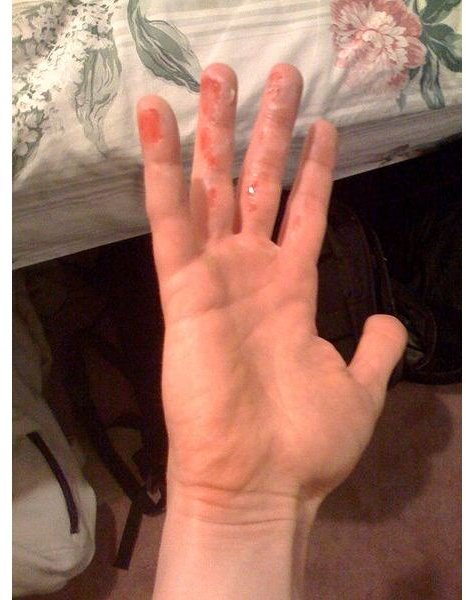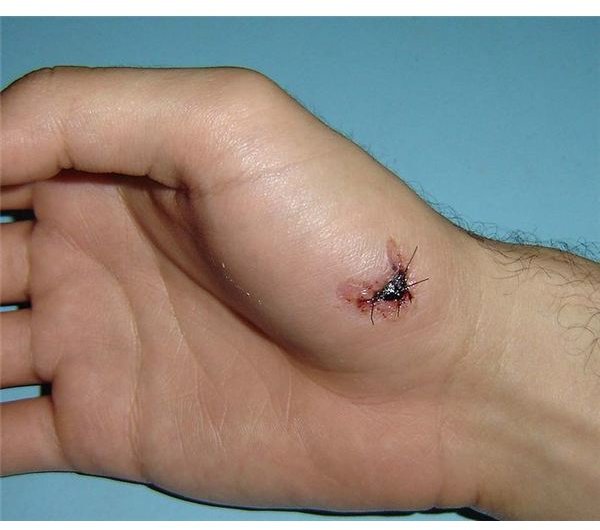Autism Self Injury: An Insight
Autism Self Injury: Why Does Self-Injury Start?
Autistic individuals have trouble communicating in the way that others do. They often misunderstand visual clues such as body language and eye contact, so their responses to others do not always fit into the mold that many people accept as normal. Therefore, it is not surprising that autism and self-injury go hand in hand. That’s because autistic individuals struggle to find ways to communicate with others and when they are having trouble expressing themselves, they sometimes self-injure as a way to get their caregiver, teacher, or other loved one to pay more attention. They may not even realize themselves that the reason is to get more attention; however, they do learn with repeated behavior that they get the attention they are seeking. Self-injury causes endorphins to activate which makes the autistic person immediately feel better. T
Basis of Autism Self Injury
Self-injury is a dangerous way to get someone’s attention. “It is estimated that between 10 and 15 percent of individuals with autism will display some form of self injury,” (Self Injury and Autism 2011) but other researchers put the rate even higher (Autism 2011). Whether they cut themselves with a knife or punch the wall with their fist, causing pain for themselves seems to be how they communicate negative feelings. This can include trying to get across that their needs and wants are not being met or it can even be a child’s way of communicating that they want demands such as school work to stop.
After all, if an individual cuts a leg so that it bleeds, the caregiver is going to work harder to try and understand what the autistic person is saying. This person sees that self-injurious behavior gets him or her what they want and so they learn to repeat it the next time they are misunderstood.
Biology also has a role in autism self-injury. Physical pain releases endorphins into the body that help a person feel better. That feeling can be compared to a high that a drug abuser feels when they reuse. “Endorphins are brain chemicals that help improve your mood while also blocking pain signals,” (Pain 2011). If an autistic person hurts him or herself just enough to start the endorphins, they feel very little pain while getting what they want from those around them. But this can be a dangerous practice.
Autism and self-injury can leave scars

What are the Risks of Self-Injury?
Anyone who performs self-injury risks medical problems. If there is a break in the skin, infection is a worry, punching a wall and stomping on the floor risks breaking bones, cutting risks severing arteries and major blood loss.
The risk is greater in an autistic person, though, because they may not understand how their body works. A “normal” adult who suffers from stress may barely slice their thigh to make the endorphins work; however, an autistic person may cut their wrists for the same effect. The person is not trying to commit suicide; they just want to bleed so the caregiver will pay attention. The autistic person doesn’t see that cutting a wrist could cause death.
Many autistic individuals do not understand that death is final. Explaining to them that a certain action could cause death is meaningless because they play video games and watch television shows where the hero comes back to life after being filled with bullets. Death has no meaning for most autistic people, and even for the ones who do comprehend what it means, they don’t care about the risk when they are frustrated.
What Should Be Done About Autism Self-Injury?
Autism self-injury should be dealt with no matter how little damage appears to be done. Repetitively tapping one’s forehead can lead to brain damage over years and rubbing one’s arm in the same place repeatedly can cause tissue damage (Heffner 2011). There are different schools of thought on how to handle self-injury. Some experts say you should immediately address the issue but others say the best cure is to ignore all self-injurious behavior. Although bleeding or breaking bones may get the caregiver’s attention faster, any behavior that causes injury should be addressed in some manner and if a caregiver’s efforts to stop the behavior do not work, they should seek professional help.
References:
“Autism and Self Injury.” Bright Tots. 2004-2011.
Heffner, Gary J. “Introduction to Self Injurious Behavior.” 2011.
Pain Management Health Center. “11 Tips for Living With Chronic Pain.” WebMD. 2005-2011.
“Self Injury and Autism.” Lovetoknow. 2006-2011.
Photo Credits:
Arthurmd. “Hand with Sutures.” Wikimedia Commons. Public Domain. 2006.
Gould, Adam. “Burned Hand.” Wikimedia Commons. Public Domain. Sept. 2009.
